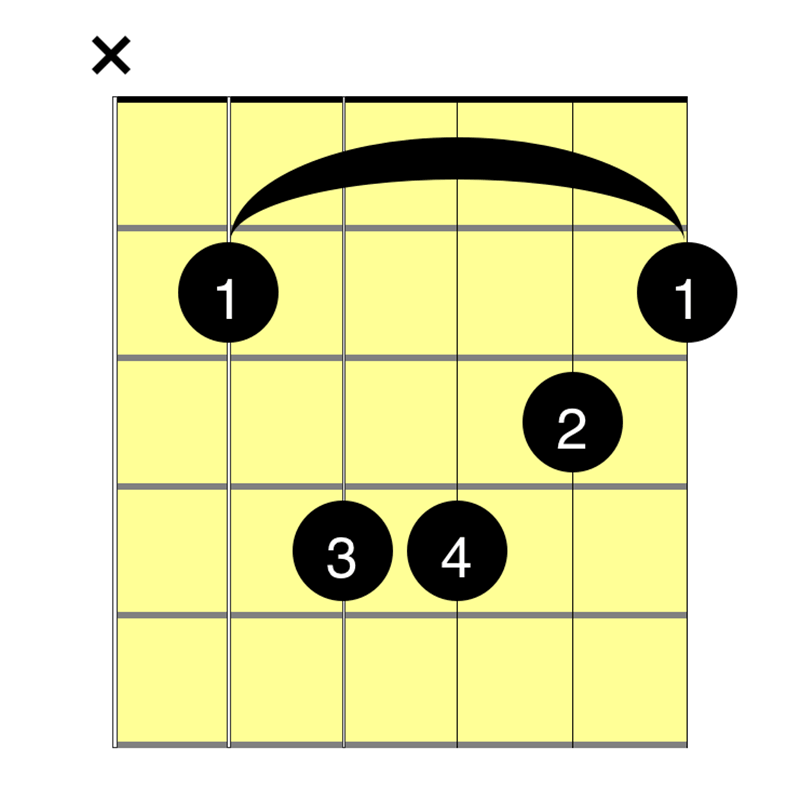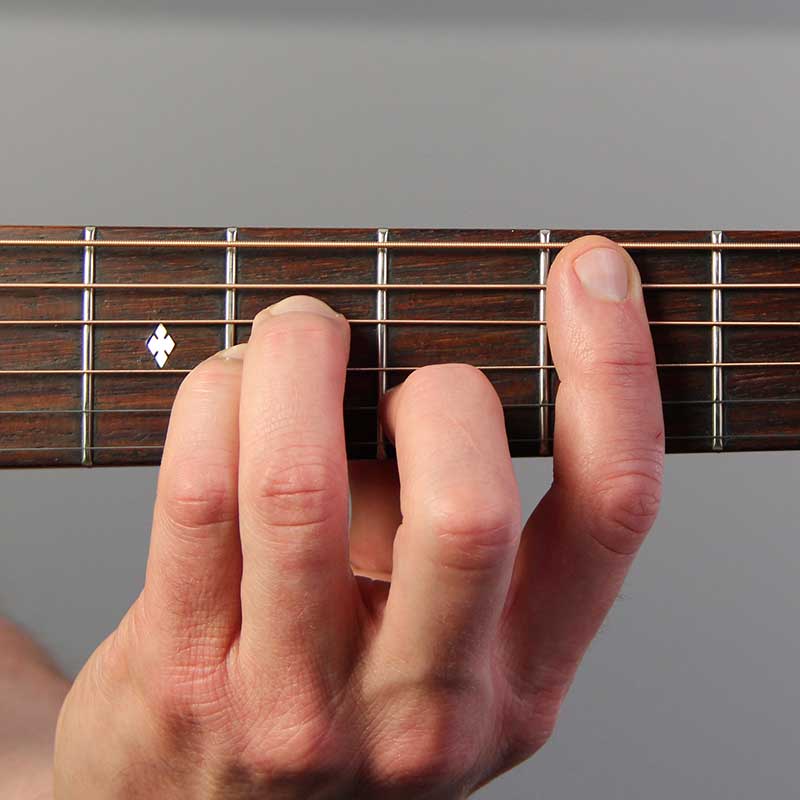Of the 12 or so “essential” beginner chords to learn on the guitar, three are significantly harder to play than the others: B minor, B major, and F major. This is because each of the chords, in its usual 5- or 6-string version, is a barre chord. In general, barre chords require more hand strength and more advanced technique than non-barre chords. You can read all about this in the How to Play Barre Chords lesson but, for now, I’m just going to talk about how to play the B minor chord.
Fingering the B Minor Chord
Playing a B minor chord on the guitar is really a combination of two separate elements working together: First, you’re pressing down on five strings with your 1st finger. And second, at the same time, you’re fingering the other three notes of the chord with your 2nd, 3rd, and 4th fingers. With those three fingers, you still want to play with the tips of your fingers like you normally do when playing non-barre chords.
Notice how the barre is notated in the diagram here, with a curved line joining the notes played by the 1st-finger barre. You’ll often see barres notated differently, like with a straight line, as shown in this lesson.
Making it Sound Good
As noted above, the challenging thing about the B minor chord (and other barre chords) is the amount of physical effort it takes. Even if you have strong hands, you’re probably not used to using your hand and forearm muscles in this particular way. One of the main effects of this early on is that you might not be able to play all the notes of the chord cleanly.
So right after you finger the chord as shown above, play each note one at a time to make sure you can hear it cleanly, without any buzzing. The hardest note to get right in this chord is the F# on the 2nd fret of the high E string. If you’re not doing a solid barre with your first finger, one that’s pressing down against all 5 strings, you’re not going to hear that F#. So test each note individually and adjust your fingering as necessary.
As with all barre chords, you really need to make sure your left hand and elbow are in the right position to play this chord well. Notice the following about this photo on the left:
- The thumb is behind the neck, somewhat perpendicular to it, not wrapped over the top of the neck.
- The elbow is pointed more toward the ground than behind the player, so that there’s space between the palm and the bottom of the fretboard.
This is all described in the lessons on how to hold the guitar and how to play barre chords, so go check those out as well.
Practice
When you first start practicing the B minor chord, make sure you don’t overdo it by trying to hold the chord for too long. You’ll only wind up with a tired, cramped hand. Instead, try to finger the chord correctly, check each string and adjust as necessary, and then let go and shake out your hand. Lots of short sessions practicing the B minor chord will be a lot more productive than long sessions that leave your hand aching. This is one of those cases, especially in the very beginning, where less is more. You can always increase the amount of time you work on it as your hand gets stronger. Which it definitely will, if you practice a few minutes every day.
Even though this chord might be harder to play than some of the other basic chords, there’s a bright side: once you can play it well, you’ll be able to play any other minor chord just by moving that same shape to different frets up or down the neck. So put some regular practice in now and you’ll get a big payoff later.



